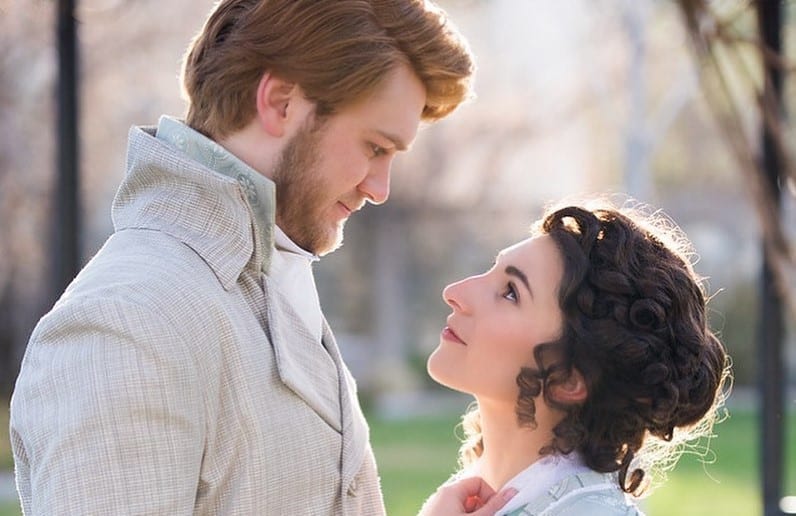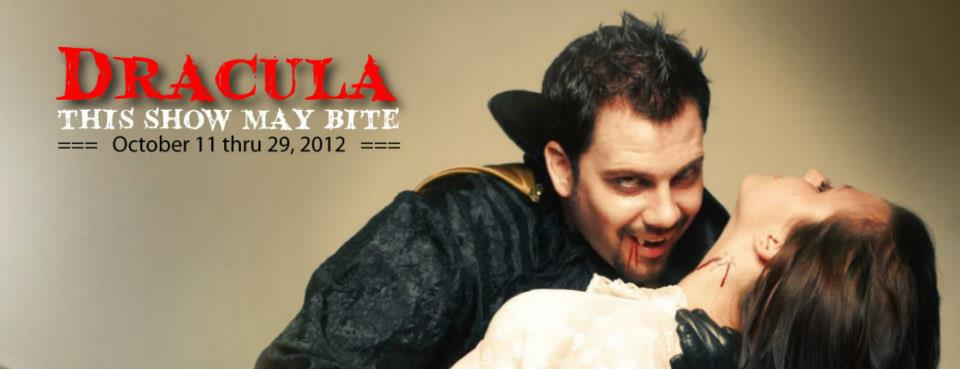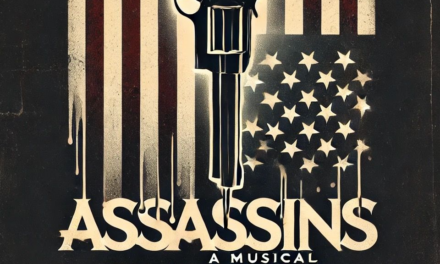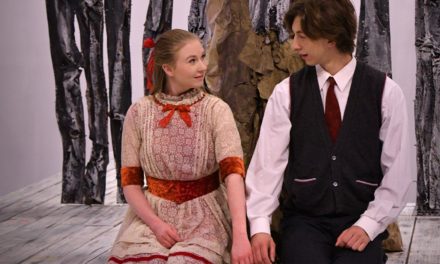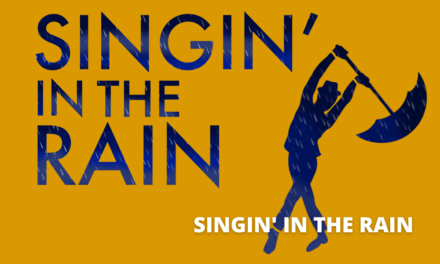OREM — Hale Center Theater Orem (HCTO)’s Sense and Sensibility made for a perfect maiden voyage back to theatre after the onset of COVID-19. With the light-hearted, comedic, and nostalgic aura, this play reaffirmed its relevance in addition to providing a jubilant escape from the unpleasant events surrounding 2020. Based on the novel by the late and great Jane Austen, originally published in 1811, Hale brings back the beloved story crediting the original direction by Christopher Clark. Although somewhat archaic in content and style, HCTO sufficiently refurbishes Austen’s renowned narrative by adding sensory appeal through contemporary incidental music and strategical use of movement in an otherwise immobile script of dialogue.

Show closes November 21, 2020.
As the play is based on a well-known book and the vehicles used were more noteworthy than the story, I will stick with a broad synopsis. The tale of two sisters, Sense and Sensibility follows Marianne and Elinor Dashwood on their campaign in finding a suitable husband after being disinherited by their brother John. While Elinor is the voice of reason strongly exhibiting her “sense,” Marianne is expressive and emotional in her showing of “sensibility.” Through their tumultuous quest in finding love, the viewer is shown the advantages and disadvantages of each of the sister’s ideologies. While Sense and Sensibility contains aged dilemmas of being a woman, such as the inability to own to property and the idea that women are unable to deserve or attract love after 30, the Dashwood sister’s experience with courting and love quandaries are parallel to those of our time. An early feminist, Austen is known for examining the consequences of strong patriarchy, and this production honored her vision.
While as a whole I found this show to be sufficient and enjoyable, the most notable facet was the direction by Blake Barlow. Stemming from a 200-year-old English novel, the production had plenty of potential for being a bland or slow production, but I experienced neither. The play moved well, using a fresh vision and a quick pace. Barlow’s choice to use layered movement throughout was a successful innovation. I enjoyed that during the lengthy set up of the story line, the audience was offered a swirling ring of action around the fixed center stage actors. The use of rolling chairs and props brought an action and liveliness to the dialogue and made scene transitions seamless and action-packed. The addition of visual movement in each scene truly provided a more capturing experience. From rambunctious dogs in a high energy conversation to mournful moving tree trunks matching Marianne’s angst, the visuals thoughtfully complemented each setting.
Sound design, crafted by Cole McClure, is another area worth mentioning. McClure used orchestral pop covers in both scene transitions and to set the tone during the scenes. The song, “Bad Romance,” whined instrumentally in the background when Elinor learns of her love’s betrothal to another. This example is just one of many scenes enhanced by the emotional triggering of well-known songs to engage the audience pathos. While this tool was impactful 90% of the time, there were a few times in which the music overlapped the dialogue and I got lost in mentally playing “name that tune” to identify the song rather than paying attention to the content of the scene. But, overall, the pop music was a success and could be useful in drawing in and keeping the attention of young audience members.
With most actors playing several roles, they had a tall order. Although multi-roling is a common tool in theatre, I found its use almost overly prevalent in this play. Perhaps the cast was meant to be kept small due to COVID-19 considerations. Fortunately, there were only a couple occurrences when it was confusing to identify which character an actor was portraying. One success was Cleveland Mckay Nicoll who played a quiet, shy reserved Edward Ferrars while still embodying an animated member of the gossip chorus and entertaining as the aforementioned rambunctious dog. Playing the floating antagonist, Emma Belnap also embraced multiple roles with conviction and fervor.
In her singular role, Malia Mackay displayed a quintessential Elinor filled with logic and sense. Meanwhile, Calee Gardner exhibited sensibility as Marianne. Particularly worth mentioning were her convincing moments of heartbreak upon Willoughby’s betrayal. Also, the synchronous gossipers were effective in moving the story along and providing an authentic imitation of the gossipy ways of Austen’s time.
While the actors were free of facial coverings, Hale Center made an effort to keep the audience and cast safe with considerations to the virus. Audience members were required to wear masks at all times, and there was no seating in the first row. Also, the theatre has upgraded their air filtration system and provided programs using a QR code rather than hard copies. There was a one seat buffer between parties in each row. I welcomed Hale’s effort in making me feel safe as an audience member and was delighted to be back in the theatre. While not ideal, consuming theatre in a mask is better than no theatre at all, and I appreciated the opportunity to attend and the fact that the arts are striving to stay alive amid such great obstacles.
HCTO manages to stay true to Jane Austen’s substance and tradition while still supplying a fresh and sensory perspective. If you feel comfortable in attending theatre currently, Sense and Sensibility is a show worth seeing. Along with the light and funny tone, the escapism of theatre offers a great respite from the heavy content of today’s current events.

This review was supported by a generous grant from the Orem CARE program.

